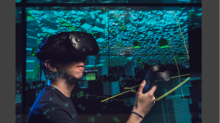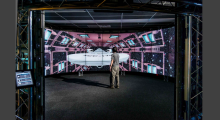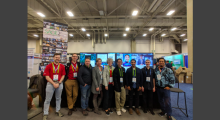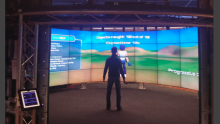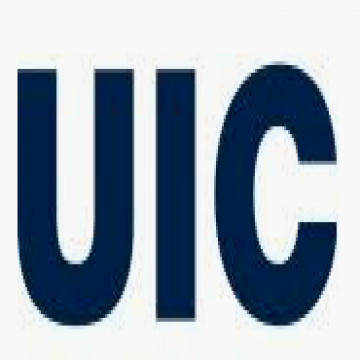
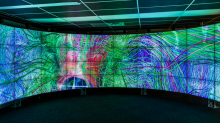
The Electronic Visualization Laboratory (EVL) at the University of Illinois at Chicago (UIC) is an internationally renowned interdisciplinary research laboratory whose mission is to enable scientific and engineering discoveries
by designing and developing high-performance visualization, virtual reality, and collaboration systems using advanced networking infrastructure. Established in 1973 as a joint effort of the UIC College of Engineering and School of Art and Design, EVL is the oldest formal collaboration between engineering and art in the U.S.
EVL has always looked 10-15 years into the future, and has a legacy of past successes. In the ’70s, the Lab pioneered real-time interactive graphics and videogame technology; in the ’80s, it began focusing on scientific visualization; in the ’90s, it focused on advanced virtual reality, and on high-speed networking infrastructure; and, in the ’00s, on accessing, sharing and displaying ultra-high-resolution images on tiled display walls. EVL’s best-known inventions include the CAVE™ virtual-reality environment, the ImmersaDesk™, OptIPortal, and the SAGE™ scalable adaptive graphics environment; EVL’s key networking initiative is StarLight.
In the ’10s, EVL is building on its decades of experience to create new hardware and software technologies, notably the CAVE2™ hybrid-reality environment and the SAGE2™ scalable amplified group environment, and with the addition of new faculty, is expanding the breadth and depth of its expertise in scientific visualization, information visualization and visual analytics.
From EVL’s early collaborations with artists to today’s global collaborations with computational scientists and application scientists in academia, government and industry, EVL has had many successes developing, nurturing and growing user communities. To fulfill its mission of enabling scientific discovery, EVL faculty, staff and students form interdisciplinary teams of computer scientists, application scientists and artists in order to create useful and usable visualization and virtual-reality tools and techniques connected to remote data stores and distant colleagues via high-speed networks.

